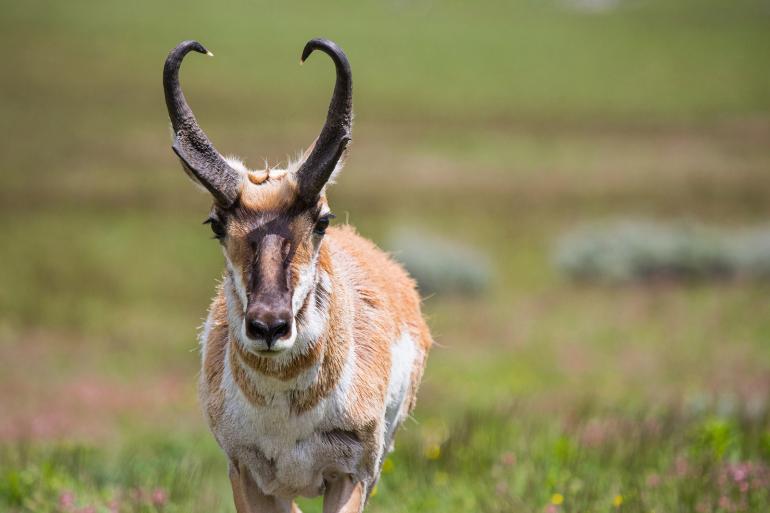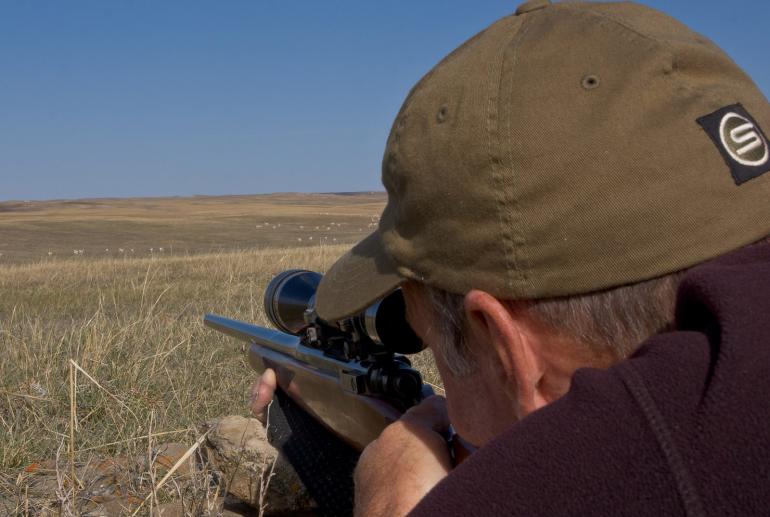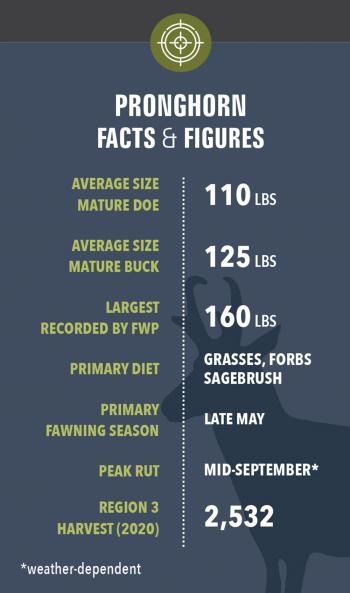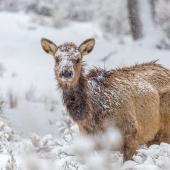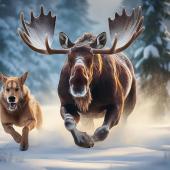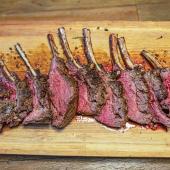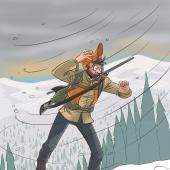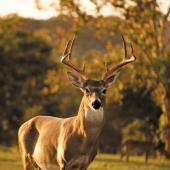Speed Demons
The hunt and harvest of pronghorn.
My wife’s birthday—September 19—conveniently marks the peak of Montana’s annual pronghorn rut. As usual, I was celebrating it with a longbow in my hand. After failing to hear any elk bugle at first light, I’d hiked down the mountain and spent the morning observing an antelope herd engaged in this complex process. Here’s how it works.
In early September, a mature, dominant herd buck will begin to gather does into a harem with the intention of breeding them when they come into season. Meanwhile, young satellite bucks gather at the periphery, hoping to sneak in on the action. Should one of the youngsters intrude too closely, the herd buck will chase him off vigorously to defend his breeding rights. When a doe comes into estrus, the herd buck tends her until she takes off in a wild sprint across the prairie with her suitor in pursuit. These frantic chases often cover miles at speeds that confirm the species’ reputation as one of the world’s fastest land mammals.
These are remarkable spectacles to behold, with the buck matching the doe stride for stride as if the whole event were choreographed. How they race across so much uneven terrain without breaking legs remains a mystery. With their nemesis safely out of the picture, at least temporarily, satellite bucks try to capitalize on his absence by trying to cut does out of the harem. After eventually catching and breeding the estrus doe, the exhausted herd buck will return to his ladies only to find himself facing intruders that need to be chased away.
Antelope are gregarious and form small herds, often segregated by gender except during the rut. Many eyes add to the difficulty of stalking them.
In addition to allowing one to witness the process of natural selection play out in real time, this annual pageant creates opportunities for a patient hunter to accomplish one of the most challenging accomplishments big-game hunting has to offer: killing a pronghorn with a bow by stalking. After observing this herd for several hours, I felt I’d figured out a way to do it.
Habitat
Antelope (following regional custom, I’ll refer to them as such although their proper common name is pronghorn) are prairie inhabitants, a characteristic that defines their distribution in North America. They are wonderfully adapted to this environment in several ways. Both their endurance and their speed are exceptional, allowing them means of escaping open-country predators. Their eyesight is legendary and deservedly so, as anyone who hunts them quickly learns. While they will visit planted fields to feed, they are most at home in sagebrush steppe habitat, which is why most of Montana’s antelope are found east of the Continental Divide.
Behavior
Antelope are gregarious and form small herds, often segregated by gender except during the rut. Many eyes add to the difficulty of stalking them. While most ungulates are crepuscular (most active at dawn and dusk), antelope are not. While they often bed down temporarily during mid-day heat, they move most actively during daylight.
I think this behavior derives from one of two weaknesses in that legendary eyesight. To scan the wide prairie for danger, an antelope’s eyes require a deep depth of field, which, as every photographer knows, depends on a narrow aperture. That means less light reaching the retina. Photographers can compensate by adjusting the shutter speed or ISO, but antelope can’t. I think they avoid low light situations that compromise their eyes’ ability to detect danger.
Based on personal observation, I think the second weakness of their vision is poor pattern recognition and disregard for motion at close range. Get close enough to antelope, as bowhunters must, and you can get away with movement that an elk or deer would never tolerate. Camouflage clothing is still advisable during archery season.
Because of their small size (a field-dressed carcass weighs 80-100 pounds) antelope are much easier to get out of the field than most game animals.
Gear
Firearms hunters will need a flat shooting rifle accurate to 250 yards. Practice will be required to take shots at that range with any rifle. Antelope are easy to bring down, making heavy calibers unnecessary. Proper shot placement is still critical. A .243 will check all these boxes nicely.
The same principles apply to choice of archery tackle. Any set-up adequate for deer will be more than enough. Shot placement is more important than bow poundage, so shoot whatever provides the best accuracy. Avoid the temptation to take shots beyond your accurate range.
Bow vs. Rifle
Despite the limitations of archery equipment, the early bow season offers two advantages. The animals are less wary than they will be after a week of rifle season, and hunting is always easier during the rut when animals are distracted and more active.
Pack Out
Because of their small size (a field-dressed carcass weighs 80-100 pounds) antelope are much easier to get out of the field than most game animals. Proper meat care is still important. Pronghorn meat’s undeserved reputation as poor table fare usually results from improper care in the field. Hunting often takes place on hot days and antelope hide has a high R-factor. Dress and skin the animal quickly and carry porous game bags to keep dressed quarters clean. Get the meat refrigerated as soon as possible.
Regs
Antelope hunting requires a permit obtained by drawing. (Over-the-counter doe tags are often available for some areas.) Specifics are regulated by hunting district. Archery seasons run mid-August through September, and rifle season from early October into November. These are general guidelines only, and as always, hunters should consult current regulations prior to hunting.
Meanwhile, back on the prairie... During hours of observation, I noticed that whenever the herd buck left the herd to pursue a doe, he returned by the same route. The next time he disappeared over the horizon in pursuit of his latest love interest, I crept into position. After hiding behind a large sage bush downwind of where I expected him to walk, I waited. Twenty minutes later, I hit his chest with an easy 15-yard broadside shot and watched him drop.
Moral of the story: it can be done, with sufficient understanding of the quarry.
A retired physician and busy writer living in Lewistown, Don Thomas has hunted Montana antelope for 50 years. Although he enjoyed hunting them with a rifle, he now hunts all big game exclusively with a bow, as does his wife, Lori.



